
Salem is a city in Henry County, Iowa, United States. The population was 394 at the time of the 2020 census.
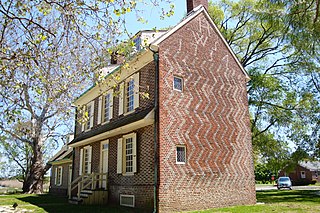
The Hancock House is a historic structure in the Hancock's Bridge section of Lower Alloways Creek Township, Salem County, New Jersey, United States. It was the site of the 1778 Hancock's Bridge massacre. The site is on the National Register of Historic Places.

The Reverend George B. Hitchcock House is a historic house museum in Cass County, Iowa, near the city of Lewis. Built in 1856 by the Congregationalist minister George B. Hitchcock, it has features indicative of its use as a "station" on the Underground Railway, corroborated by documentary evidence of Hitchcock's involvement in the shelter and transport of escaped slaves. It was declared a National Historic Landmark in 2006. It now houses a museum.
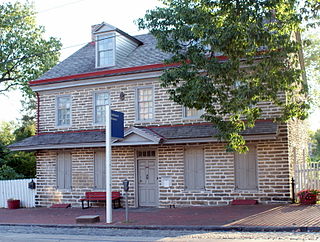
The John Johnson House is a National Historic Landmark in the Germantown section of Philadelphia, significant for its role in the antislavery movement and the Underground Railroad. It is located at 6306 Germantown Avenue and is a contributing property of the Colonial Germantown Historic District, which is also a National Historic Landmark. It is operated today as a museum open to the public.

The John Street House is a historic home in Salem, Ohio. It was a stop on the Underground Railroad.

The Daniel Howell Hise House is an historic home that was part of the Underground Railroad. It is listed on the National Register of Historic Places and is located in Salem, Ohio.

Oakdale Memorial Gardens, formerly Oakdale Cemetery, is located in east-central Davenport, Iowa, United States. It contains a section for the burial of pets called the Love of Animals Petland. In 2015, the cemetery was listed as an historic district on the National Register of Historic Places, and as a local landmark on the Davenport Register of Historic Properties. It is also listed on the Network to Freedom, a National Park Service registry for sites associated with the Underground Railroad.
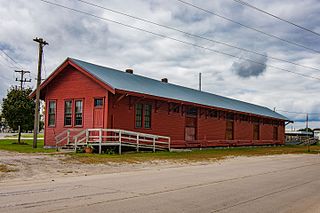
Chariton freight station is an historic building located in Chariton, Iowa, United States. Chariton was a wholesale and distribution center for southern Iowa when the Chicago, Burlington, and Quincy Railroad built the freight house in 1904. It reflected the town's importance as a division point for the railroad. The structure contains 3,700 square feet (340 m2) of interior space. The depot was listed on the National Register of Historic Places in 2003 as the Chicago, Burlington, and Quincy Freight House-Chariton.

Marshalltown is an unincorporated community located within Mannington Township, in Salem County, New Jersey. It has also been known as Frogtown.

William Green House is a historic residence located in the unincorporated community of Rochester, Iowa, United States. It was listed on the National Register of Historic Places in 1999.

The Peter and Mary Smith House, also known as the Hopkins House and the Otto House, is a historic dwelling located in Lake City, Iowa, United States. Peter Smith was a pioneer to this town and a prominent businessman. He was involved in retail, banking, and real estate. Smith and his first wife Sarah settled in Calhoun County, Iowa from Cass County, Michigan around 1855, and bought land near the present Smith Farmhouse. He served as the first judge in the county when Lake City was the county seat. Sarah died in 1875 while they were living in Glidden, Iowa. After the arrival of the railroad in 1881, Peter and his second wife Mary moved to Lake City. They built this two-story, brick, L-shaped house in 1887. While it does not conform to any one style, it is primarily a combination of the Italianate and the Gothic Revival styles. The Italianate influence is found in the bracketed cornice, segmentally arched lintels, wooden cutout designs over the windows, a front bay window, and the hipped roof. The influences of the Gothic Revival style are found in the bargeboard and the roof line. The house was listed on the National Register of Historic Places in 1990.

The Smith Farmhouse, also known as the Smith Homestead Farmhouse, is a historic dwelling located in Lake City, Iowa, United States. This house's significance is due to its association with the pioneer Smith family. Peter and Sarah Smith and their four young sons settled here from Cass County, Michigan in 1855. Their first two houses were built on the same property to the north of this one. Their first house and barn were log structures, and their second was frame construction. What is now known as Lake City was chosen as the county seat for Calhoun County because it was the area with the highest population. Smith donated 40 acres (16 ha) of land for the town.

The Franklin Pearson House is a historic house located on Dodge Street in Keosauqua, Iowa and is a confirmed stop on the Underground Railroad.
The John and Elizabeth McMurn Early House is a historic residence located south of Earlham, Iowa, United States. The Earlys settled in Madison County in 1855 from Eddyville, Iowa. They bought 160 acres (65 ha) of raw prairie and established a farm. This was the second house built on the property, and it was unusual for a "second generation" farm house in Central Iowa to be built of stone around the time of the Civil War. The Earlys were Presbyterians and held services in the house until a church was built. John Early was an ardent Republican and abolitionist who was active in the Underground Railroad. While "it is said, had as many as five runaway slaves on his place at one time", there is no evidence this house itself was a stop. The Earlys lived here until their deaths in 1872 (Elizabeth) and 1873 (John). The house was listed on the National Register of Historic Places in 1993.
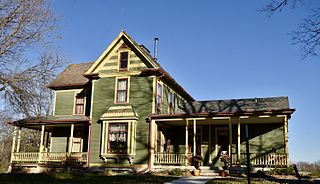
The Owen A. and Emma J. Garretson House is a historic building located east of Salem, Iowa, United States. Its significance is derived from its association with Owen Garretson, a local farmer, politician, and historian. His parents, Joel C. and Elizabeth (Goodson) Garretson, were two of the earliest settlers in Henry County, settling here in 1837. The elder Garretson's were opposed to slavery and their farm house was a stop on the Underground Railroad. Owen farmed with his father, and eventually acquired his father's farm. He was involved locally and on the state level with the People's Party, served as a county supervisor, and on the boards of local institutions. Garretson was the president of the Henry County Historical Society, and was a member of the State Historical Society of Iowa. He wrote several articles on the history of Henry County and southeast Iowa that were published in Palimpsest and the Iowa Journal of History and Politics.
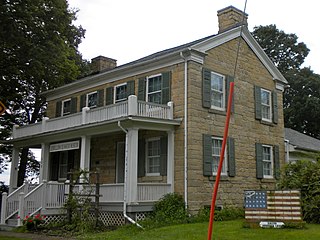
The Henderson Lewelling House, also known as the Lewelling Quaker Museum, is a historic building located in Salem, Iowa, United States. Henderson Luelling and his wife Elizabeth were among the first settlers in the Quaker community of Salem in 1837. They moved here from Henry County, Indiana, and Henderson moved his fruit tree nursery with him. This was Iowa's first commercial nursery. Henderson built this two-story stone house with Greek Revival details in 1843. The Lewellings were abolitionists associated with the Society of Anti-Slavery Friends, and his home is thought to have been a stop on the Underground Railroad. The family left Salem for Oregon in 1847, taking the nursery with them.

The Paton and Hannah Wilson House is a historic building located north of Salem, Iowa, United States. Built by 1839, this single story Greek Revival is one of the oldest brick residences in Salem Township. Paton, or Payton, served in both the Iowa territorial legislature (1840-1842) and the Iowa state legislature (1850-1852). He advocated for the rights of all people, including citizens of color. Hannah was a charter member of Salem Monthly Meeting (Quakers). The Wilson's estate sold the house to Reuben and Abigail Hallowell in 1875, and their descendants continued to own it into the 21st century. The house was listed on the National Register of Historic Places in 2010.

The Cook-Johnson House is a historic house located at 3091 Franklin Avenue north of Salem, Iowa.
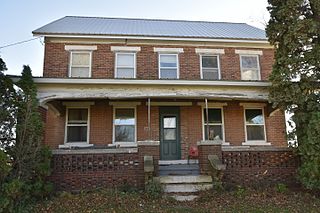
The Lamm-Pollmiller Farmstead District is a nationally recognized historic district located southeast of Salem, Iowa, United States. It comprises the farm house and outbuildings that were built by Henry and Elizabeth (Cook) Lamm beginning in 1849. The Lamms were Quakers who settled here from Ohio. The house is a two-story, brick, Greek Revival. The farm is located along the old Military Road that passed along the north side of the property. Local lore said that this was a stage coach stop in the 1850s and the 1860s. The Pollmiller family bought the farm in 1905. The farmstead was listed on the National Register of Historic Places in 2010.





















